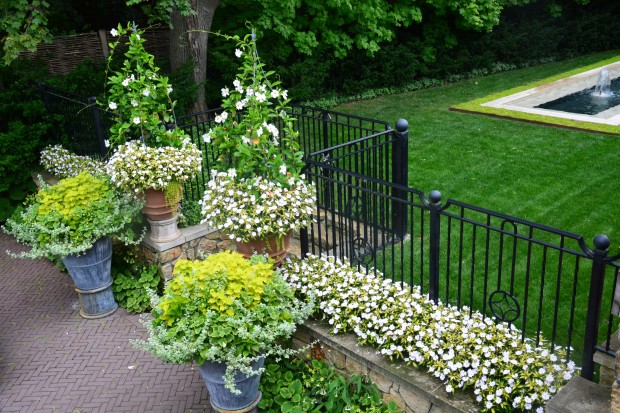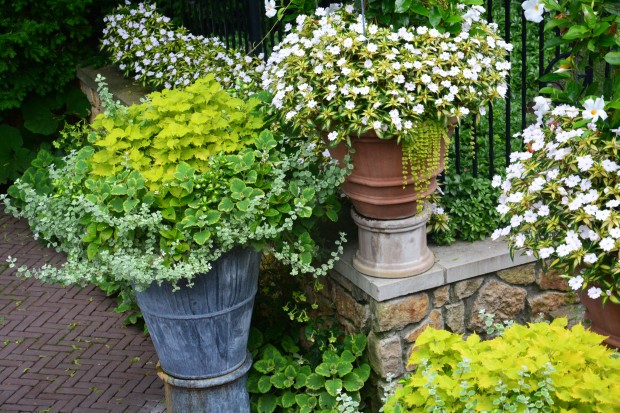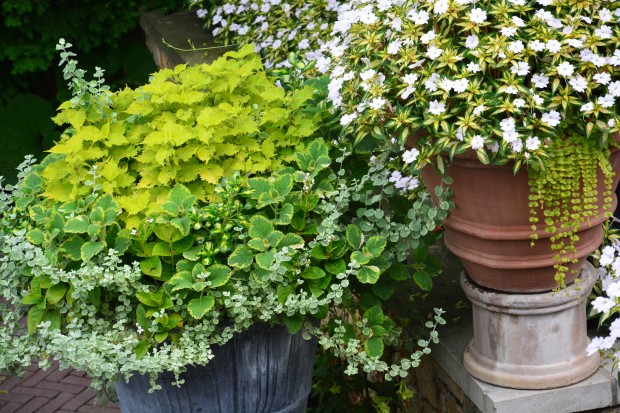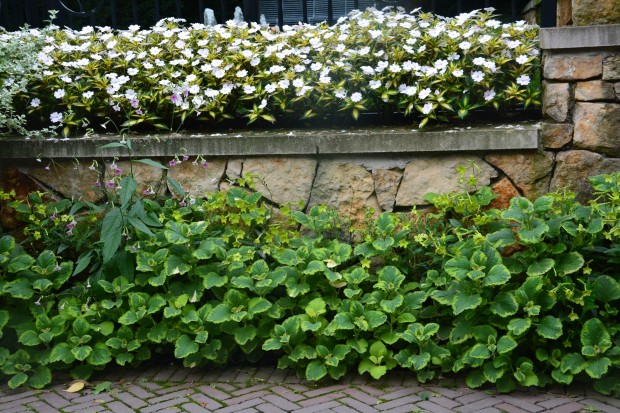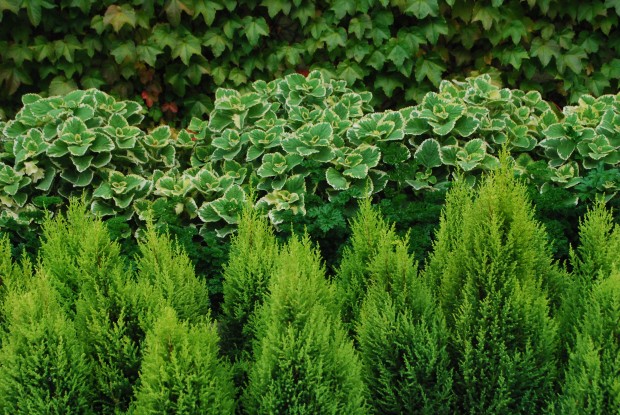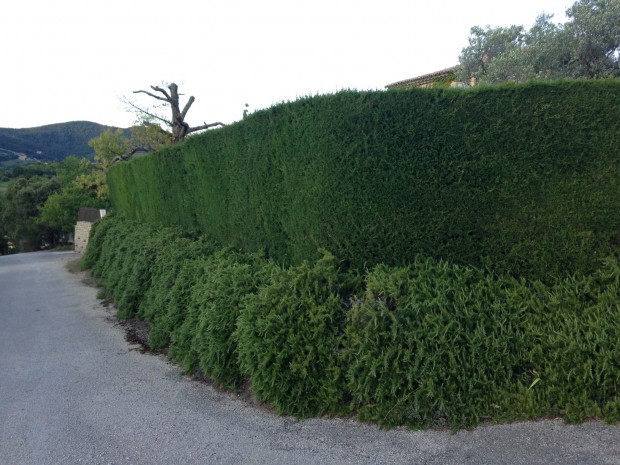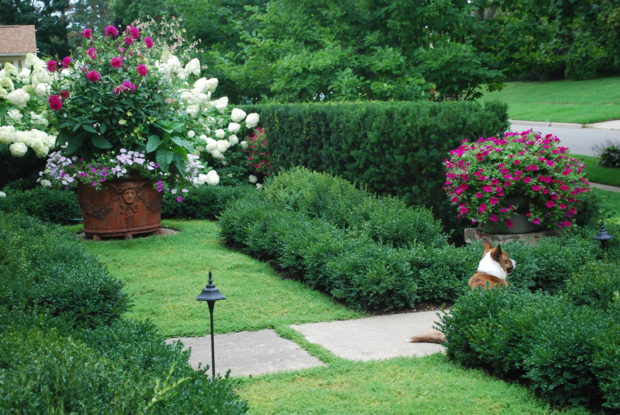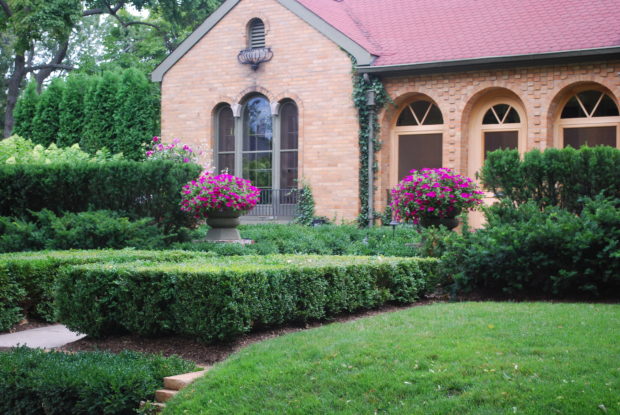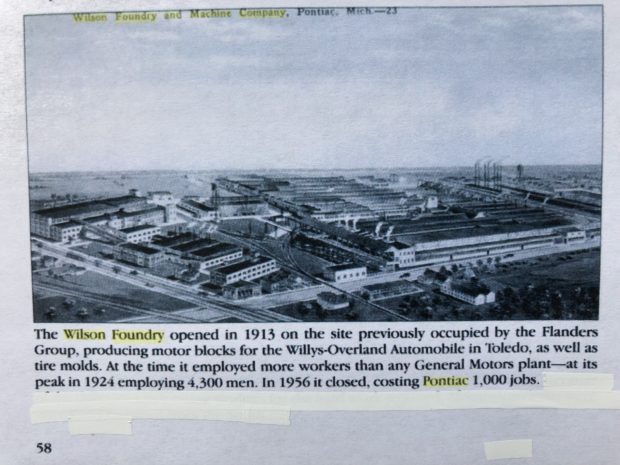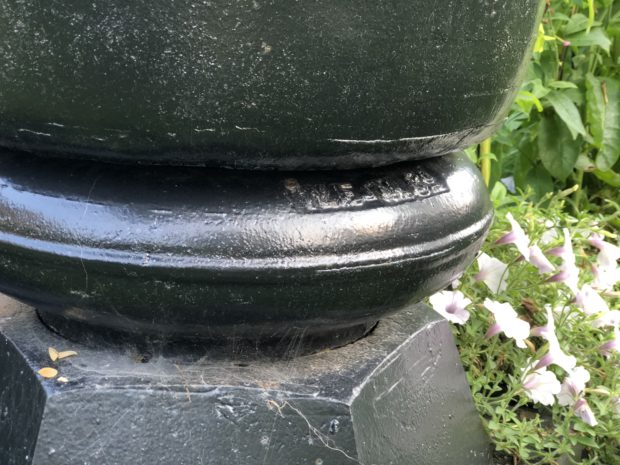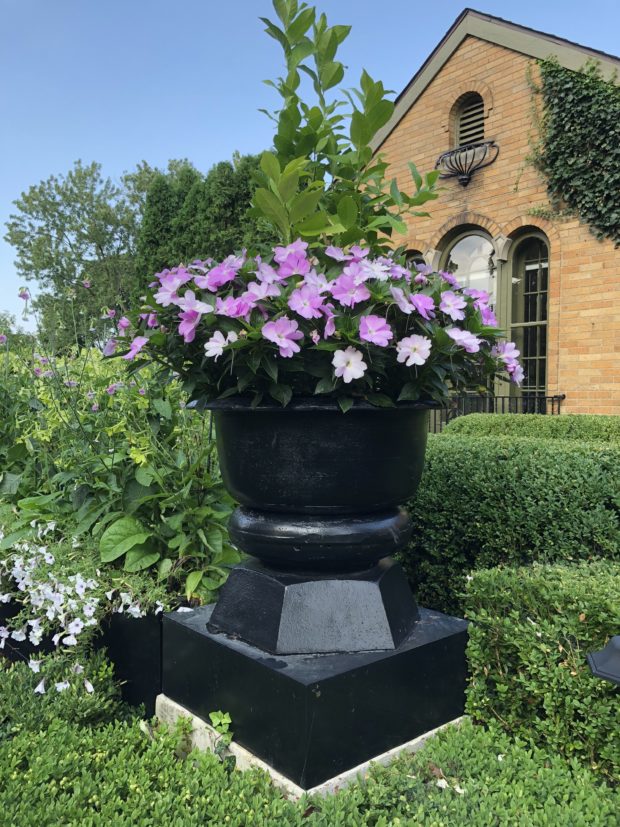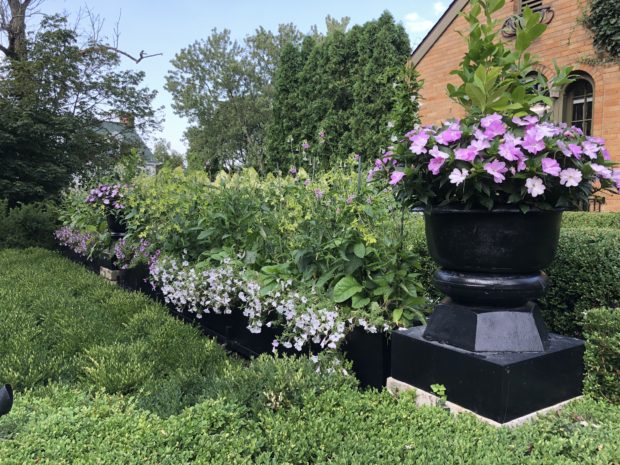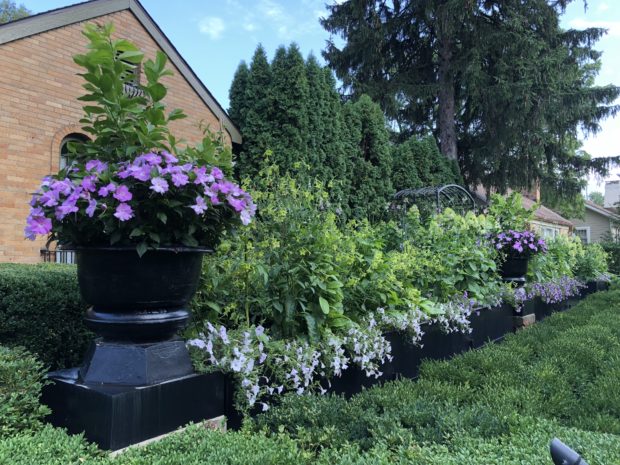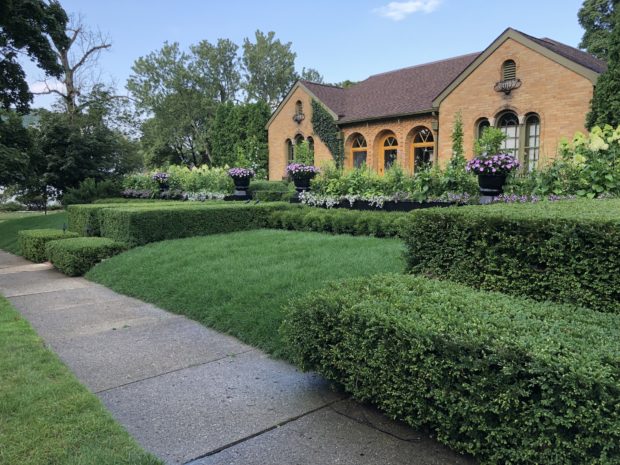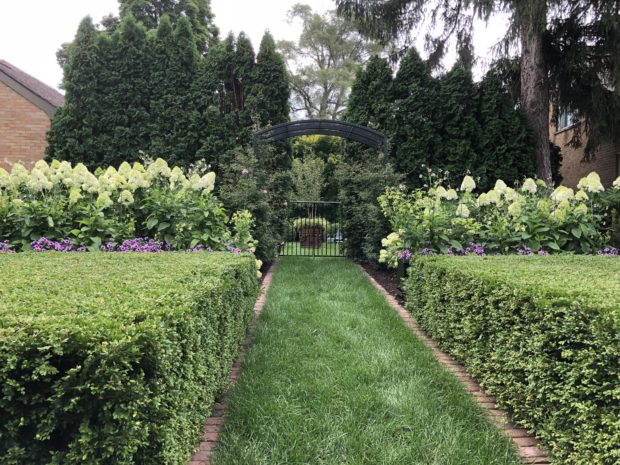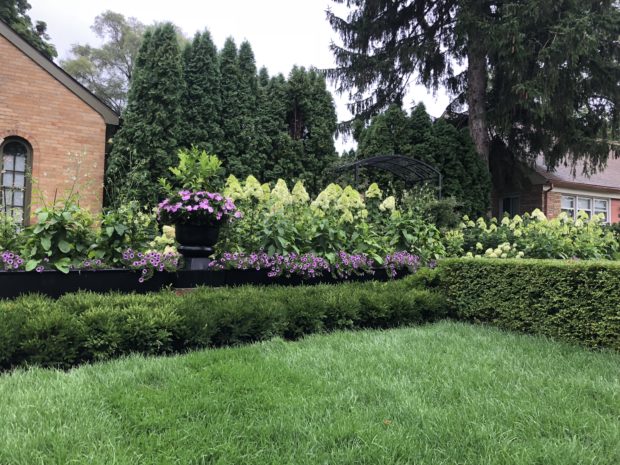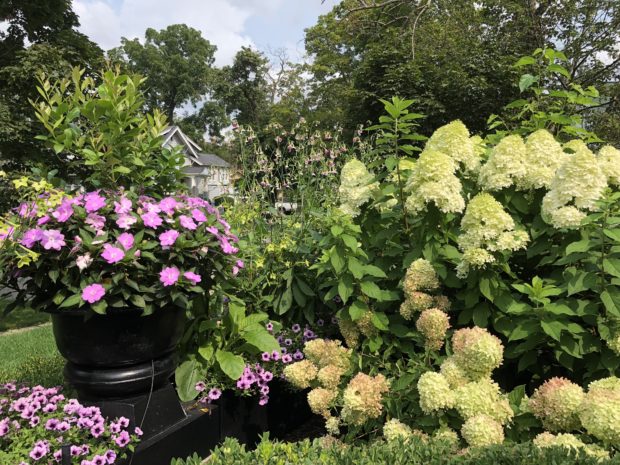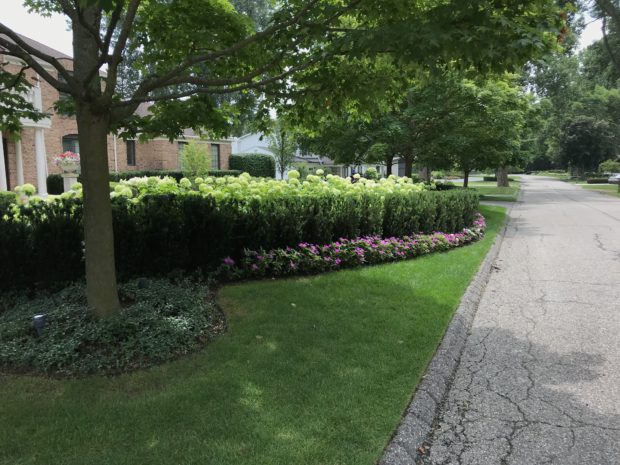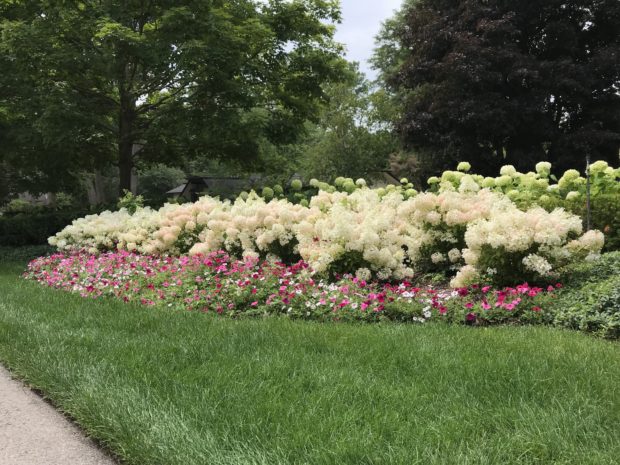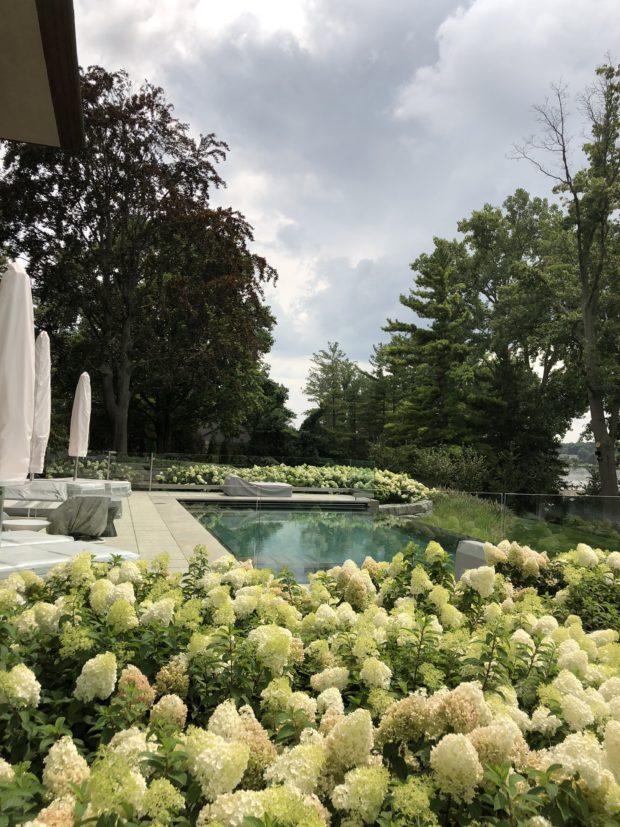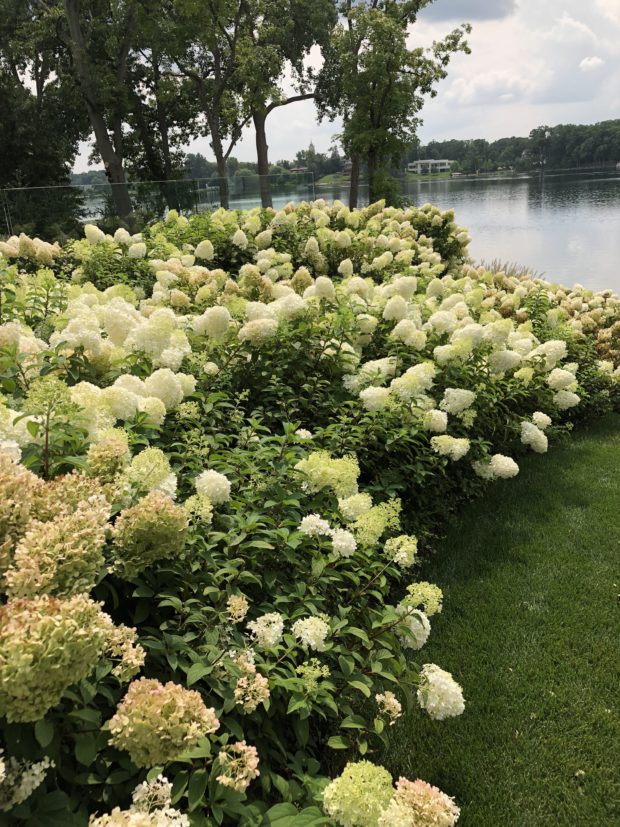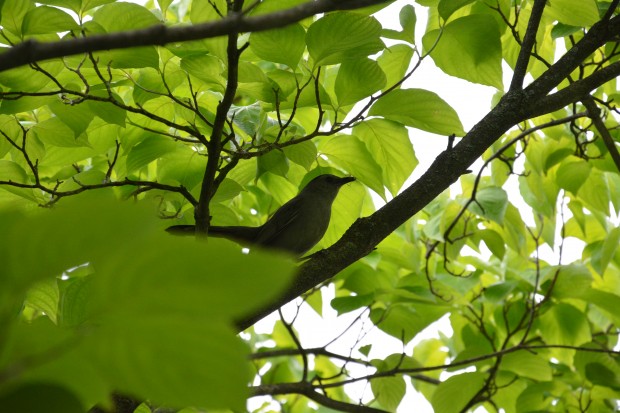
I have a whole lot of landscape surrounding my driveway. Why so? I drive up and drive out of it at least 2 times a day, maybe more. There are plenty of other places in my garden that I see only intermittently. An example that explains how frequent visitation drives design-see the following. As my house is on a corner, I drive by the front door every day. This is a drive by, not a visit. Until the hydrangeas come into bloom, I am only in that garden to water the pots. Let’s go to the back door. Lots of traffic there. My driveway is a daily experience. I suppose I could remove my driveway, as neither Buck nor I use the garage to house cars. I could do a narrow walk to the curb. But that makes getting groceries inside or taking the trash out a challenge. A driveway makes the transportation of vehicles, and items in and out easy. Given its size and function, it is also easy for a driveway to be unsightly. By that I mean, untouched by a landscape. A great driveway landscape is a quality of life issue. It should make you reluctant to leave home in the morning, and happy to get home at night.
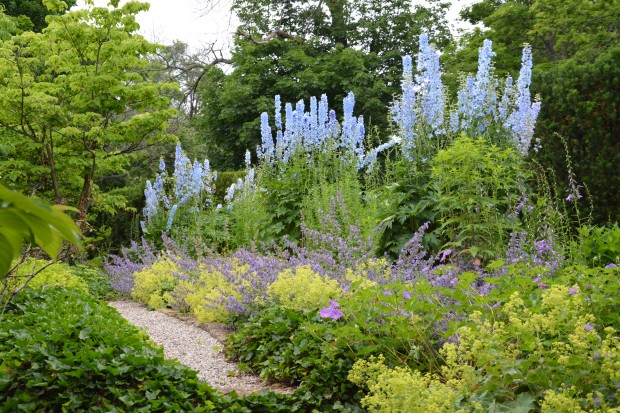 My landscape crowds my driveway, both on the ground plane, and overhead. I I have trees that arch over both sides of my drive. This means I have birds singing here in the morning and evening. New to the driveway trees this past week-a solitary catbird. I only prune when Buck complains he can’t walk by, or the branches scrape up against my car. 4 Parrotias, 3 magnolias and 4 dogwoods. My driveway garden is congested. Lots of trees over a drive minimizes a big utilatarian paved space, and goes on to celebrate the garden. There are yews, both upright and spreading. There are garden spaces too. Hellebores, hostas and butterburrs. In a sunnier spot, there are delphiniums, nepeta, adenophora and alchemilla early on, and phlox and white hibiscus. It has a weedy and relaxed look. The lime green of the alchemilla flowers is especially pretty right now.
My landscape crowds my driveway, both on the ground plane, and overhead. I I have trees that arch over both sides of my drive. This means I have birds singing here in the morning and evening. New to the driveway trees this past week-a solitary catbird. I only prune when Buck complains he can’t walk by, or the branches scrape up against my car. 4 Parrotias, 3 magnolias and 4 dogwoods. My driveway garden is congested. Lots of trees over a drive minimizes a big utilatarian paved space, and goes on to celebrate the garden. There are yews, both upright and spreading. There are garden spaces too. Hellebores, hostas and butterburrs. In a sunnier spot, there are delphiniums, nepeta, adenophora and alchemilla early on, and phlox and white hibiscus. It has a weedy and relaxed look. The lime green of the alchemilla flowers is especially pretty right now.
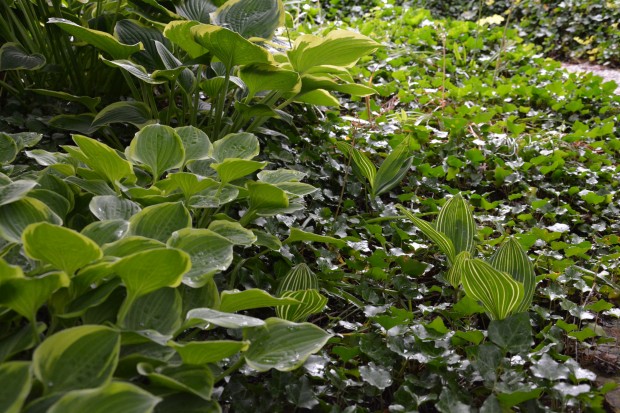 My driveway landscape is a big fluid mix of plants. This is an effort to make the driveway the least important visual issue, in spite of the need for a car park. The driveway is necessary, yes. Is the driveway the most important issue in the landscape? I think not. I would suggest that a thoughtful and beautiful landscape could make the necessity of a driveway a treasured feature. To follow is my take on that driveway. Let’s get back to that expresion of lime green. The flowers of alchemilla mollis- so beautiful. Other sources of that lime green come from variegated lily of the valley, hosta montana variegata, and gold drop hostas.
My driveway landscape is a big fluid mix of plants. This is an effort to make the driveway the least important visual issue, in spite of the need for a car park. The driveway is necessary, yes. Is the driveway the most important issue in the landscape? I think not. I would suggest that a thoughtful and beautiful landscape could make the necessity of a driveway a treasured feature. To follow is my take on that driveway. Let’s get back to that expresion of lime green. The flowers of alchemilla mollis- so beautiful. Other sources of that lime green come from variegated lily of the valley, hosta montana variegata, and gold drop hostas.
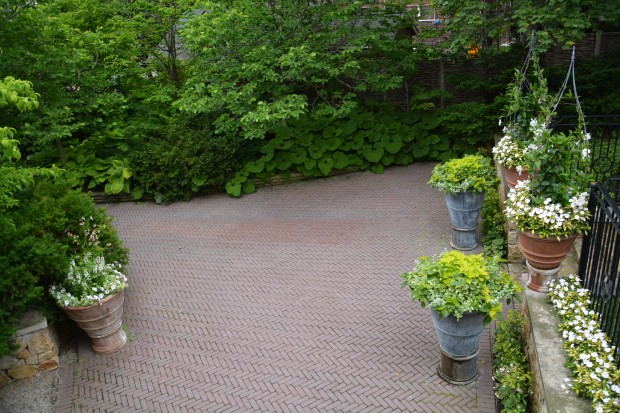 What looks like a brick driveway is in fact a concrete brick manufactured by Unilock called Capthorne. This material looks like it might have been original to my 1930’s home. Whomever designed this driveway in the beginning did a great job. The drive to the street is in the top left of this picture. The landscape completely shields it from the view presented by my deck. The parking area looks a lot more about piazza than parking. I have planted the driveway pots with much the same color scheme as the landscape.
What looks like a brick driveway is in fact a concrete brick manufactured by Unilock called Capthorne. This material looks like it might have been original to my 1930’s home. Whomever designed this driveway in the beginning did a great job. The drive to the street is in the top left of this picture. The landscape completely shields it from the view presented by my deck. The parking area looks a lot more about piazza than parking. I have planted the driveway pots with much the same color scheme as the landscape.
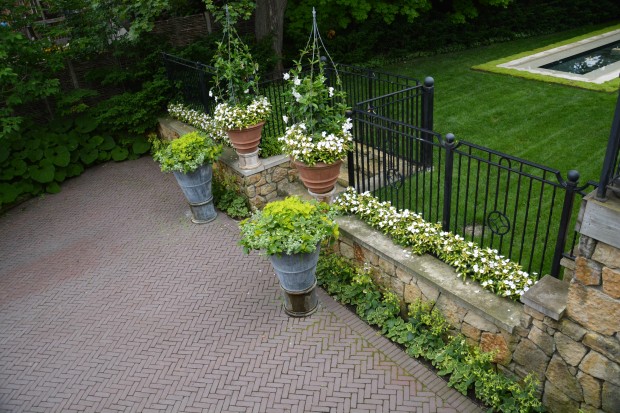 Lots of green. And even more lime green. The driveway garden has a lot of old Sum and Substance hosta, which foreshadow the lime green Princeton Gold maples, and the lime sagina subulata in the upper level fountain fountain.
Lots of green. And even more lime green. The driveway garden has a lot of old Sum and Substance hosta, which foreshadow the lime green Princeton Gold maples, and the lime sagina subulata in the upper level fountain fountain.
 The lime green in the pots is coming from Wasabi coleus, variegated white sunpatiens, creeping jenny, variegated licorice, and several lime green tropical plants whose names I cannot remember. I am not so concerned if I cannot name a plant. I am very concerned if I cannot put together a garden that is cohesive. So many great gardeners I know have no knowledge of the botanical names. Sometimes, they have no names of any sort. But they know how to make things grow. That said, I have plants whose names are unknown to me in my driveway pots.
The lime green in the pots is coming from Wasabi coleus, variegated white sunpatiens, creeping jenny, variegated licorice, and several lime green tropical plants whose names I cannot remember. I am not so concerned if I cannot name a plant. I am very concerned if I cannot put together a garden that is cohesive. So many great gardeners I know have no knowledge of the botanical names. Sometimes, they have no names of any sort. But they know how to make things grow. That said, I have plants whose names are unknown to me in my driveway pots.
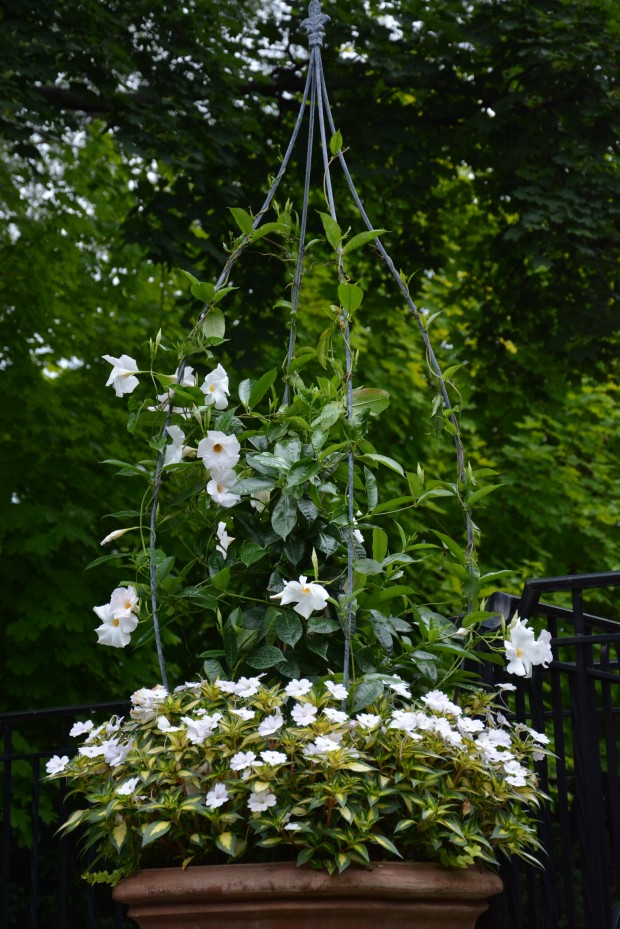 I aspire to the making things grow group. The design of my driveway garden pots needs to reflect the landscape all around. This means, to some degree, that I choose plants by instinct. Plants that strike my fancy. As this is my home landscape, I have no one to answer to beyond myself.
I aspire to the making things grow group. The design of my driveway garden pots needs to reflect the landscape all around. This means, to some degree, that I choose plants by instinct. Plants that strike my fancy. As this is my home landscape, I have no one to answer to beyond myself.
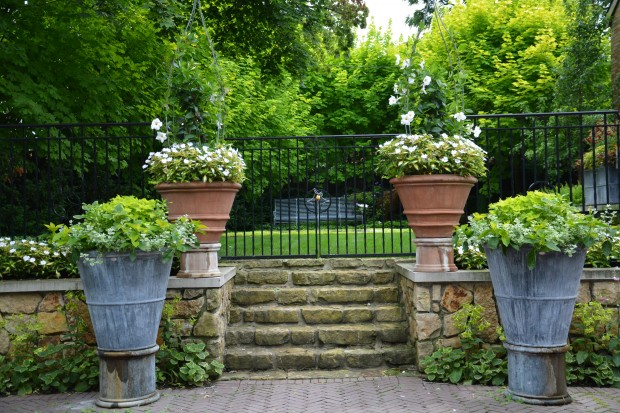 I do strongly feel that container plantings are an opportunity for any gardener to express themselves in a seasonal way. My driveway landscape has been many years in the making. The pots and annual plants in the ground is my opportunity to change things up. A chance to make a statement. Go in whatever direction suits me at the time. I have planted my driveway with lots of different schemes over the years. I like the yearly chance to re imagine.
I do strongly feel that container plantings are an opportunity for any gardener to express themselves in a seasonal way. My driveway landscape has been many years in the making. The pots and annual plants in the ground is my opportunity to change things up. A chance to make a statement. Go in whatever direction suits me at the time. I have planted my driveway with lots of different schemes over the years. I like the yearly chance to re imagine.
 This year, the lime represented by the green and gold plectranthus, the nicotiana lime, and the variegated sunpatiens, is enough lime green to please me. The one nicotiana mutabilis in a sea of lime green is an outlier. I try to design for that. The warm yellow wall looks so great, dressed in lime green.
This year, the lime represented by the green and gold plectranthus, the nicotiana lime, and the variegated sunpatiens, is enough lime green to please me. The one nicotiana mutabilis in a sea of lime green is an outlier. I try to design for that. The warm yellow wall looks so great, dressed in lime green.
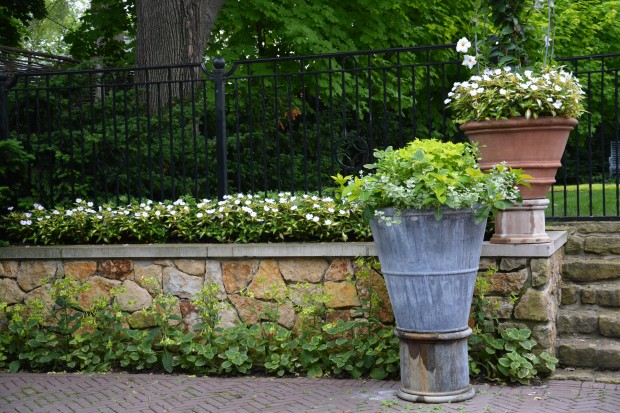 I have worked for years to make the driveway landscape more visually important than the driveway. This year, I am pleased all around with the results. Everything in the landscape takes years to settle in. In my mind, everything is working together.
I have worked for years to make the driveway landscape more visually important than the driveway. This year, I am pleased all around with the results. Everything in the landscape takes years to settle in. In my mind, everything is working together.

Tonight, both Howard and I have cause to celebrate.
